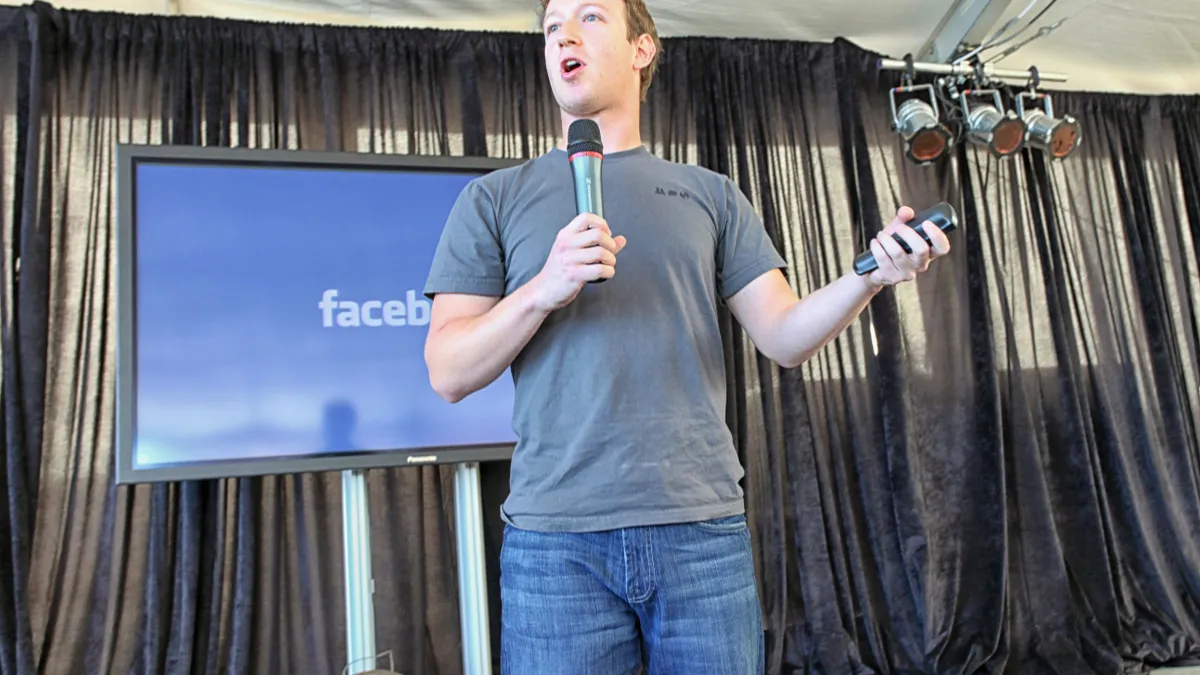Dive Brief:
- Facebook announced Tuesday that it would commit to reducing greenhouse gas emissions by 75% and powering global operations with 100% renewable energy by the end of 2020, continuing a trend of green corporate power purchases that has grown this year.
- Facebook has signed more than 3 GW of solar and wind contracts since its first wind power purchase in 2013, but much of the company's focus on clean energy has surfaced in the last year. Over the last 12 months the company says it has signed contracts for more than 2.5 GW of renewables.
- This year will set a new record for corporate renewable energy deals, according to recent analysis from Bloomberg New Energy Finance. Earlier this month the firm estimated corporations have purchased 7.2 GW of clean energy so far this year, already beating last year's record by almost 2 GW.
Dive Insight:
Many companies are making investments in renewable energy, but Facebook's challenge is somewhat complicated by the fact that its needs will continue to grow, Bobby Hollis, the company's head of global energy, told Utility Dive.
While the tech giant believes it can be 100% clean energy in two years, it will also need to continue developing new resources as its reach spreads.
Even so, company officials tell Utility Dive they are confident they can meet that challenge: in part by strategic positioning of data centers in areas where the electric grid can accommodate more renewables; and also by working closely with utilities to develop new green tariffs and products or to ensure new resources can be interconnected.
"As a starting point with a utility, they need either a current offering or we work with them to create something new, so that we can access new renewable resources," Hollis said. "That is a requirement for us, not just that they be renewable, but new renewable energy resources to serve the new energy consumption once we’re operating in their state."
The company says Facebook is the "ultimate financial commitment" for new renewable projects, but it still works with regulated utilities to enable the project to connect to their power grid. In unregulated markets, Facebook says it will work directly with the renewable developer, without the utility acting as an intermediary.
Despite calling its portfolio "clean and renewable," the company says it does not include nuclear and is also shifting away from hydroelectricity. The company is technology agnostic, so long as resources are new renewables, but so far the focus has been on wind energy, particularly as prices have plummeted.
The 2.5 GW commitment in the last year will give Facebook a little over 3 GW of clean energy total, with most in the United States. Company officials say that of the new commitments, 300 MW is in Norway but the remainder is in the U.S.
"Because of variations in renewable energy markets and utilities, these projects are done through mechanisms such as renewable energy tariffs and direct power purchase agreements. ... In other words, these projects would not be happening without the long-term financial commitment that Facebook has undertaken," company spokesperson Melanie Roe said in an email.
Last year the company consumed 2.46 million MWh of energy, overall, but the company remains a bit cagey on just how much clean energy resources they believe will be necessary.
All of these wind and solar projects are "new and on the same grid as our data centers," Facebook said in its announcement. The company is building on previous, aggressive clean energy goals. Three years ago it targeted 50% renewables by this year but says it got there early, reaching 51% "clean and renewable" energy in 2017.
"We have been talking with utilities about how and when it would make sense to incorporate storage," Hollis said. "A lot of places we've gone into have not had a lot of renewable integration and penetration so we're helping to move them forward. … we're so early in the process and many states outside of California have a lot of room."
Facebook's data centers account for 62% of its carbon footprint, the company said, while offices and other business activity account for 38%.














